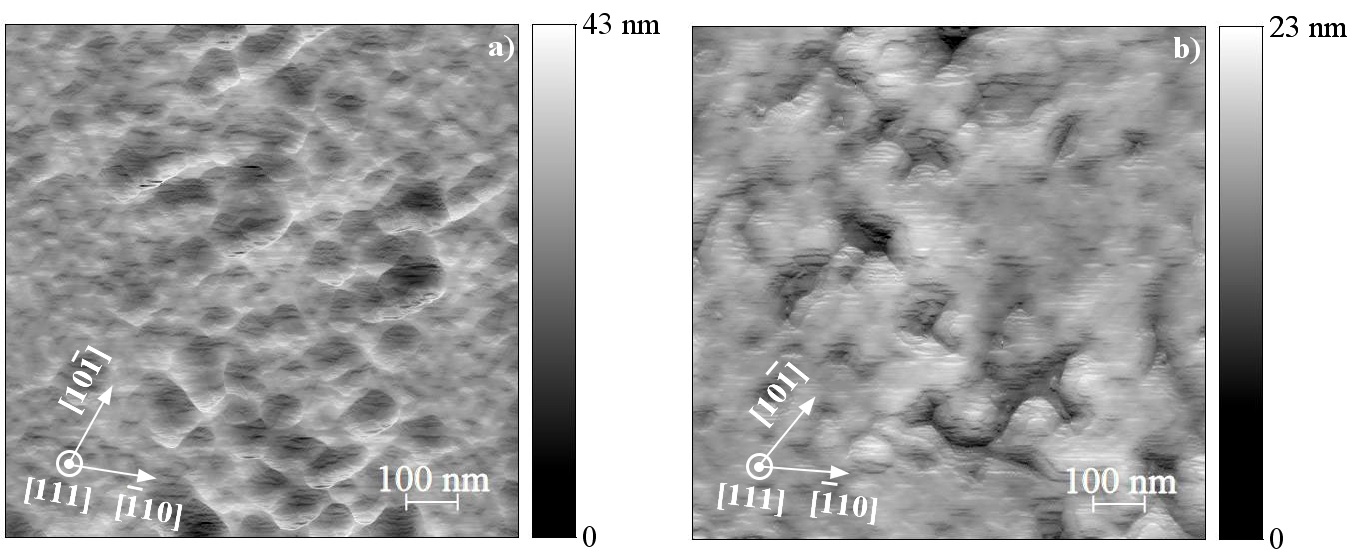Nanosystems: Phys. Chem. Math., 2023, 14 (5), 601–605
Growth of nanotextured thin films of GaInAsP and GaInAsSbBi solid solutions on GaP substrates by pulsed laser deposition
Alexander S. Pashchenko – Federal Research Center Southern Scientific Center of the Russian Academy of Sciences, Rostov-on-Don; North Caucasian Federal University, Stavropol, Russia; semicondlab@ya.ru; as.pashchenko@gmail.com
Oleg V. Devitsky – Federal Research Center Southern Scientific Center of the Russian Academy of Sciences, Rostov-on-Don; North Caucasian Federal University, Stavropol, Russia; v2517@rambler.ru
Leonid S. Lunin – Federal Research Center Southern Scientific Center of the Russian Academy of Sciences, Rostov-on-Don; North Caucasian Federal University, Stavropol, Russia
Marina L. Lunina – Federal Research Center Southern Scientific Center of the Russian Academy of Sciences, Rostov-on-Don, Russia
Olga S. Pashchenko – Federal Research Center Southern Scientific Center of the Russian Academy of Sciences, Rostov-on-Don, Russia
Eleonora M. Danilina – Federal Research Center Southern Scientific Center of the Russian Academy of Sciences, Rostov-on-Don, Russia
Corresponding author: Alexander S. Pashchenko, semicondlab@ya.ru, as.pashchenko@gmail.com
PACS 68.35.Ct, 68.55.Jk, 81.15.-z, 81.15.Cd
DOI 10.17586/2220-8054-2023-14-5-601-605
ABSTRACT GaInAsP and GaInAsSbBi solid solutions were grown on GaP (111) substrates by pulsed laser deposition using a laser fluence of 2.3 J/cm2. Energy Dispersive X-ray microanalysis, atomic force microscopy, and Raman spectroscopy were used for analysis of the elemental composition and study of the surface morphology and chemical bonds of the obtained solid solutions. It was found that at constant growth temperature and the fluence of 2.3 J/cm2, the elemental composition of the film has a significant effect on the growth kinetics. Surface-active elements (Sb and Bi) in the composition of the solid solution lead to a change in the surface diffusion of In and Ga, which is accompanied by a decrease in roughness. It was established that the films growth in the Volmer–Weber mode. The grown films are nanotextured with a predominant orientation in the direction of growth (111).
KEYWORDS pulsed laser deposition, solid solutions, GaP, semiconductors, III-–V compounds
ACKNOWLEDGEMENTS This work was funded as part of a state order to the Southern Scientific Centre of the Russian Academy of Sciences, projects No. 122020100254-3 (studies of chemical composition and morphology) and No. 122020100326-7 (Raman studies). The growth of experimental samples was carried out using the resources of Center for Collective Use of North Caucasus Federal University and with the financial support of the Ministry of Education and Science of Russia, the unique identifier of the project is RF-2296.61321X0029 (agreement No. 075-15-2021-687). The authors express their gratitude to the North Caucasian Federal University for their assistance in the framework of the competition for supporting projects of scientific groups and individual scientists of the university.
FOR CITATION Pashchenko A.S., Devitsky O.V., Lunin L.S., Lunina M.L., Pashchenko O.S., Danilina E.M. Growth of nanotextured thin films of GaInAsP and GaInAsSbBi solid solutions on GaP substrates by pulsed laser deposition. Nanosystems: Phys. Chem. Math., 2023, 14 (5), 601–605.
[In Russian] Пащенко А. С., Девицкий О. В., Лунин Л. С., Лунина М. Л., Пащенко О.С., Данилина Э.М.
Рост твердых растворов GaInAsP и GaInAsSbBi на подложках GaP методом импульсного лазерного напыления
АННОТАЦИЯ Твердые растворы GaInAsP и GaInAsSbBi были выращены на подложках GaP (111) методом импульсного лазерного напыления с плотностью энергии лазерного излучения 2,3 Дж/см2. Для определения элементного состава и изучения морфологии поверхности и химических связей полученных твердых растворов использовали энергодисперсионный рентгеновский микроанализ, атомно-силовую микроскопию и спектроскопию комбинационного рассеяния. Установлено, что при постоянной температуре роста и плотности энергии лазерного излучения 2,3 Дж/см2 элементный состав пленки оказывает существенное влияние на кинетику роста. Поверхностно-активные элементы (Sb и Bi) в составе твердого раствора приводят к изменению поверхностной диффузии In и Ga, что сопровождается уменьшением шероховатости. Установлено, что пленки растут в режиме Фольмера–Вебера.
КЛЮЧЕВЫЕ СЛОВА Импульсное лазерное напыление, твердые растворы, GaP, полупроводники, твердые растворы III–V
